- Types of Sailboats
- Parts of a Sailboat
- Cruising Boats
- Small Sailboats
- Design Basics
- Sailboats under 30'
- Sailboats 30'-35
- Sailboats 35'-40'
- Sailboats 40'-45'
- Sailboats 45'-50'
- Sailboats 50'-55'
- Sailboats over 55'
- Masts & Spars
- Knots, Bends & Hitches
- The 12v Energy Equation
- Electronics & Instrumentation
- Build Your Own Boat
- Buying a Used Boat
- Choosing Accessories
- Living on a Boat
- Cruising Offshore
- Sailing in the Caribbean
- Anchoring Skills
- Sailing Authors & Their Writings
- Mary's Journal
- Nautical Terms
- Cruising Sailboats for Sale
- List your Boat for Sale Here!
- Used Sailing Equipment for Sale
- Sell Your Unwanted Gear
- Sailing eBooks: Download them here!
- Your Sailboats
- Your Sailing Stories
- Your Fishing Stories
- Advertising
- What's New?
- Chartering a Sailboat
- Cruising Yachts 35' to 40'
- Bayfield 40

The Bayfield 40 Sailboat
The Bayfield 40 is a classic Canadian sailboat that was designed by Ted Gozzard for cruising and first built in 1982.
It features a staysail ketch rig, a clipper bow with a bowsprit, a long keel, and a spacious interior. The boat is known for its traditional style, solid construction and comfortable sailing performance.
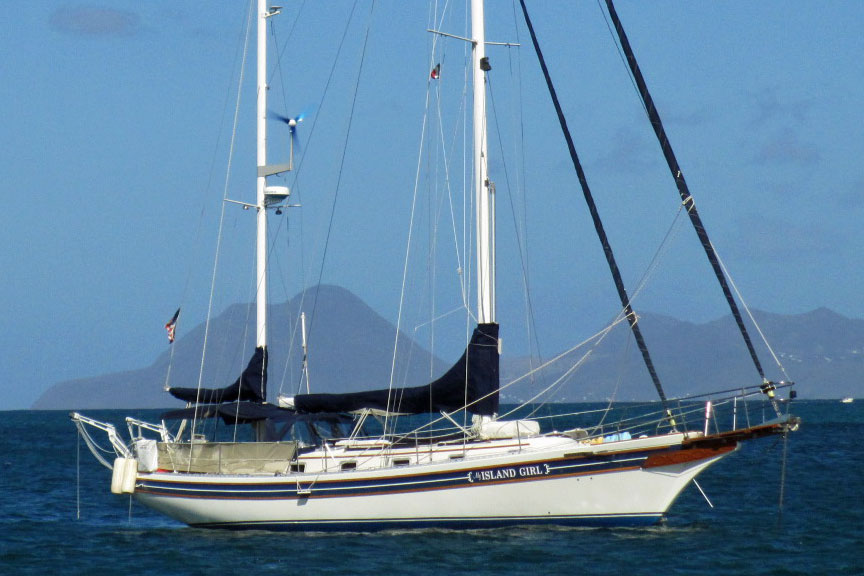
Published Specification for the Bayfield 40
Underwater Profile: Long keel
Hull Material: GRP (Fiberglass)
Length Overall: 45'6" (13.9m) including bowsprit
Waterline Length: 30'6" (9.3m)
Beam: 12'0" (3.7m)
Draft: 4'11" (1.5m)
Rig Type: Staysail ketch
Displacement: 21,000lb (9,526kg)
Designer: Hayden Gozzard
Builder: Bayfield Boatyard (Canada)
Year First Built: 1982
Published Design Ratios for the Bayfield 40
1. Sail Area/Displacement Ratio: 16.9
2. Ballast/Displacement Ratio: 35.1
3. Displacement/Length Ratio: 291
4. Comfort Ratio: 30.7
5. Capsize Screening Formula: 1.8
read more about these all-revealing numbers...
Summary Analysis of the Design Ratios for the Bayfield 40
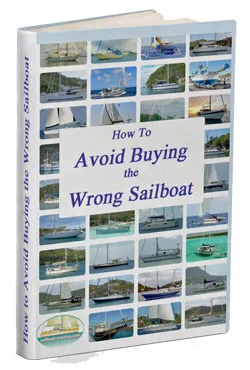
1. A Sail Area/Displacement Ratio of 16.9 suggests that the Bayfield 40 will need a stiff breeze to get her going. In light conditions, unless you've got plenty of time on your hands, motor-sailing may be the way to go.
2. A Ballast/Displacement Ratio of 35.1 means that the Bayfield 40 will have a tendency to heel excessively in a gust, and she'll need to be reefed early to keep her sailing upright in a moderate breeze.
3. A Displacement/Length Ratio of 291, tells us the Bayfield 40 is clearly a heavy displacement cruising boat. You can load her down with all your cruising gear and equipment and it will hardly affect her waterline. Not an ideal choice for coastal sailing, but she'll come into her own on an offshore passage in testing conditions.
4. Ted Brewer's Comfort Ratio of 30.7 suggests that crew comfort of a Bayfield 40 in a seaway is similar to what you would associate with the motion of a moderate bluewater cruising boat - a predictable and acceptable motion for most seasoned sailors.
5. The Capsize Screening Formula (CSF) of 1.8 tells us that a Bayfield 40 would be a safer choice of sailboat for an ocean passage than one with a CSF of more than 2.0.
Any Questions?
Is the Bayfield 40 still in production and, if not, when did production end and how many of these sailboats were built?
The Bayfield 40 is no longer in production. The design was built by Bayfield Boat Yard in Clinton, Ontario, Canada, starting in 1984, but the company went out of business in 1988 after a factory fire which ended production. It is estimated that about 50 Bayfield 40s were built.
What is the history of the builders of the Bayfield 40 and is the company still in business?
Bayfield Boat Yard was founded by Hayden Gozzard in 1970. He started by building small sailboats and gradually expanded to larger models. He hired his brother Ted Gozzard as the chief designer in 1973. The company produced several popular designs, such as the Bayfield 25, 29, 32, and 36, before launching the Bayfield 40 in 1984.
What sailplan and rig options are available for the Bayfield 40?
The Bayfield 40 has a staysail ketch rig, with aluminium spars, a clipper bow with a bowsprit and a raised counter transom. The sail area is 794ft 2 (74m 2 ), with a mainsail area of 280ft 2 (26 m 2 ) and a jib/genoa area of 514 ft 2 (48 m 2 ). The rig is designed to provide good balance and stability in various wind conditions.
What is the Bayfield 40 like to sail?
The Bayfield 40 is a comfortable and easy-to-sail boat that can handle various sea conditions. It has a moderate displacement of 21,000 lb (9,525 kg) and a high ballast ratio of 39%. It has a low sail area/displacement ratio of 16.9, which means it is not very fast or responsive, but it is stable and seaworthy. The boat has a long waterline of 30.50 ft (9.30 m) and a beam of 12.00 ft (3.66 m), which give it good hull speed and roominess. The boat is fitted with a Yanmar diesel engine of 44 hp (33 kW) or a Westerbeke diesel engine of 52 hp (39 kW) for docking and manoeuvring.
What is the average cost of a secondhand Bayfield 40?
The average cost of a secondhand Bayfield 40 depends on the condition, equipment, and location of the boat. According to some online listings, the price range for a used Bayfield 40 is between $60,000 and $100,000 USD.
What other sailboats have been created by the designer of the Bayfield 40?
Ted Gozzard, the designer of the Bayfield 40, has created several other sailboats, such as the Gozzard 31, Gozzard 36, Gozzard 37, Gozzard 41, Gozzard 44 and Gozzard 53. He also founded his own company, Gozzard Yachts, in 1984, which is still in operation today.
The above answers were drafted by sailboat-cruising.com using GPT-4 (OpenAI’s large-scale language-generation model) as a research assistant to develop source material; to the best of our knowledge, we believe them to be accurate.
Recent Articles
Live Aboard Boats For Sale
Mar 30, 24 07:02 PM
A Beneteau Oceanis 43 for Sale
Mar 30, 24 06:01 PM
'Hitchcock', an RM1260 Sailboat for Sale
Mar 27, 24 09:53 AM
Here's where to:
- Find Used Sailboats for Sale...
- Find Used Sailing Gear for Sale...
- List your Sailboat for Sale...
- List your Used Sailing Gear...
Our eBooks...

A few of our Most Popular Pages...

Copyright © 2024 Dick McClary Sailboat-Cruising.com
BAYFIELD 40 Detailed Review
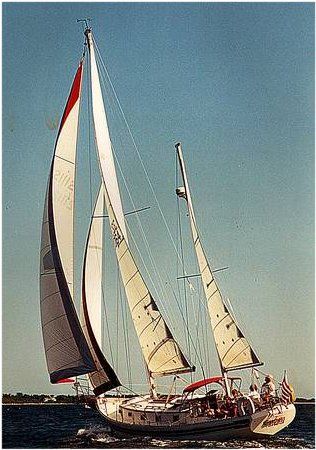
If you are a boat enthusiast looking to get more information on specs, built, make, etc. of different boats, then here is a complete review of BAYFIELD 40. Built by Bayfield Boat Yard Ltd. (CAN) and designed by Ted Gozzard, the boat was first built in 1982. It has a hull type of Long Keel and LOA is 12.04. Its sail area/displacement ratio 21.29. Its auxiliary power tank, manufactured by Yanmar, runs on Diesel.
BAYFIELD 40 has retained its value as a result of superior building, a solid reputation, and a devoted owner base. Read on to find out more about BAYFIELD 40 and decide if it is a fit for your boating needs.
Boat Information
Boat specifications, sail boat calculation, rig and sail specs, auxillary power tank, accomodations, contributions, who designed the bayfield 40.
BAYFIELD 40 was designed by Ted Gozzard.
Who builds BAYFIELD 40?
BAYFIELD 40 is built by Bayfield Boat Yard Ltd. (CAN).
When was BAYFIELD 40 first built?
BAYFIELD 40 was first built in 1982.
How long is BAYFIELD 40?
BAYFIELD 40 is 9.3 m in length.
What is mast height on BAYFIELD 40?
BAYFIELD 40 has a mast height of 12.65 m.
Member Boats at HarborMoor
Bayfield 40
The bayfield 40 is a 39.5ft staysail ketch designed by ted gozzard and built in fiberglass by bayfield boat yard ltd. (can) between 1982 and 1988..
The Bayfield 40 is a heavy sailboat which is a reasonably good performer. It is stable / stiff and has an excellent righting capability if capsized. It is best suited as a bluewater cruising boat. There is a good water supply range.
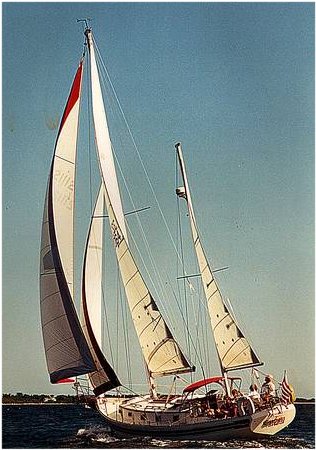
Bayfield 40 for sale elsewhere on the web:

Main features
Login or register to personnalize this screen.
You will be able to pin external links of your choice.

See how Sailboatlab works in video

We help you build your own hydraulic steering system - Lecomble & Schmitt
Accommodations
Builder data, other photos, modal title.
The content of your modal.
Personalize your sailboat data sheet
Great choice! Your favorites are temporarily saved for this session. Sign in to save them permanently, access them on any device, and receive relevant alerts.
- Sailboat Guide
Bayfield 36/40
Bayfield 36/40 is a 41 ′ 2 ″ / 12.6 m monohull sailboat designed by Hayden Gozzard and built by Bayfield Boat Yard Ltd. between 1985 and 1988.
Rig and Sails
Auxilary power, accomodations, calculations.
The theoretical maximum speed that a displacement hull can move efficiently through the water is determined by it's waterline length and displacement. It may be unable to reach this speed if the boat is underpowered or heavily loaded, though it may exceed this speed given enough power. Read more.
Classic hull speed formula:
Hull Speed = 1.34 x √LWL
Max Speed/Length ratio = 8.26 ÷ Displacement/Length ratio .311 Hull Speed = Max Speed/Length ratio x √LWL
Sail Area / Displacement Ratio
A measure of the power of the sails relative to the weight of the boat. The higher the number, the higher the performance, but the harder the boat will be to handle. This ratio is a "non-dimensional" value that facilitates comparisons between boats of different types and sizes. Read more.
SA/D = SA ÷ (D ÷ 64) 2/3
- SA : Sail area in square feet, derived by adding the mainsail area to 100% of the foretriangle area (the lateral area above the deck between the mast and the forestay).
- D : Displacement in pounds.
Ballast / Displacement Ratio
A measure of the stability of a boat's hull that suggests how well a monohull will stand up to its sails. The ballast displacement ratio indicates how much of the weight of a boat is placed for maximum stability against capsizing and is an indicator of stiffness and resistance to capsize.
Ballast / Displacement * 100
Displacement / Length Ratio
A measure of the weight of the boat relative to it's length at the waterline. The higher a boat’s D/L ratio, the more easily it will carry a load and the more comfortable its motion will be. The lower a boat's ratio is, the less power it takes to drive the boat to its nominal hull speed or beyond. Read more.
D/L = (D ÷ 2240) ÷ (0.01 x LWL)³
- D: Displacement of the boat in pounds.
- LWL: Waterline length in feet
Comfort Ratio
This ratio assess how quickly and abruptly a boat’s hull reacts to waves in a significant seaway, these being the elements of a boat’s motion most likely to cause seasickness. Read more.
Comfort ratio = D ÷ (.65 x (.7 LWL + .3 LOA) x Beam 1.33 )
- D: Displacement of the boat in pounds
- LOA: Length overall in feet
- Beam: Width of boat at the widest point in feet
Capsize Screening Formula
This formula attempts to indicate whether a given boat might be too wide and light to readily right itself after being overturned in extreme conditions. Read more.
CSV = Beam ÷ ³√(D / 64)
From BlueWaterBoats.org :
The Bayfield 36 is a Canadian built, full keeled cruiser with traditional teak styling designed by Hayden Gozzard. Production started in 1985 and ran until the factory in Clinton, Ontario burned down in 1988. She is a unique combination of new and old thinking with her clipper bow, trailboards, and teak combings combined with an aluminium toerail and beamy interior. This is a “big” 36-footer, and owners love her as much for her good looks as for her amazingly spacious accommodations. Performance-wise she will not win you any races but when in a blow you will enjoy her heavy displacement, full keeled underbody. Handholds are wherever you need them.
The construction is solid glass with molded inserts to create the interior substructure while the deck is balsa cored. Chainplates tie into bulkheads or special stubs tied into the hull. The mast is keel stepped while the internal ballast is 6,500 pounds of lead. The fuel tankage is aluminium with 45 gallons capacity while the water and holding tanks are plastic. Her accommodations include two cabins, a head with tub, and spacious salon. Some versions have a fixed salon table while others have a table that folds down from the main bulkhead. Here is where the Bayfield shines with the spaciousness of a much larger yacht. In fact it is mystery how they packed the proverbial 10 pounds in 1 pound sack. Her engine was a Yanmar 4 JHE 44 HP which is still in many. Access is beneath the companionway and through the starboard cockpit bench.
Buyers Notes
The aluminium fuel tank is prone to corrosion. It sits just forward the companionway inserts deep into the bilge. The original stove used butane gas which is difficult to find and refill in the USA. Originally specifications listed 4′ 11″ as the draft. Actual drafts are around 5′ 9″ due to overbuilding and cruising weight. Exterior storage is limited with no lazzarettes or anchor locker.
Links, References and Further Reading
» Bayfield 36 Review , Richard Jordan, Waves » Contemporary Classic, Sven Donaldson, Boat Review
Embed this page on your own website by copying and pasting this code.
Discover Related Sailboats

Blue Water Boats
This collection of capable blue water boats features time-tested sailboats with rich histories.

Cabo Rico 38
- About Sailboat Guide
©2024 Sea Time Tech, LLC
This site is protected by reCAPTCHA and the Google Privacy Policy and Terms of Service apply.
JavaScript seem to be disabled in your browser.
You must have JavaScript enabled in your browser to utilize the functionality of this website.
Edwards Yacht Sales

- 866.365.0706
1983 Bayfield Yachts Cutter Ketch
- Ft Pierce, FL, US
Yacht price
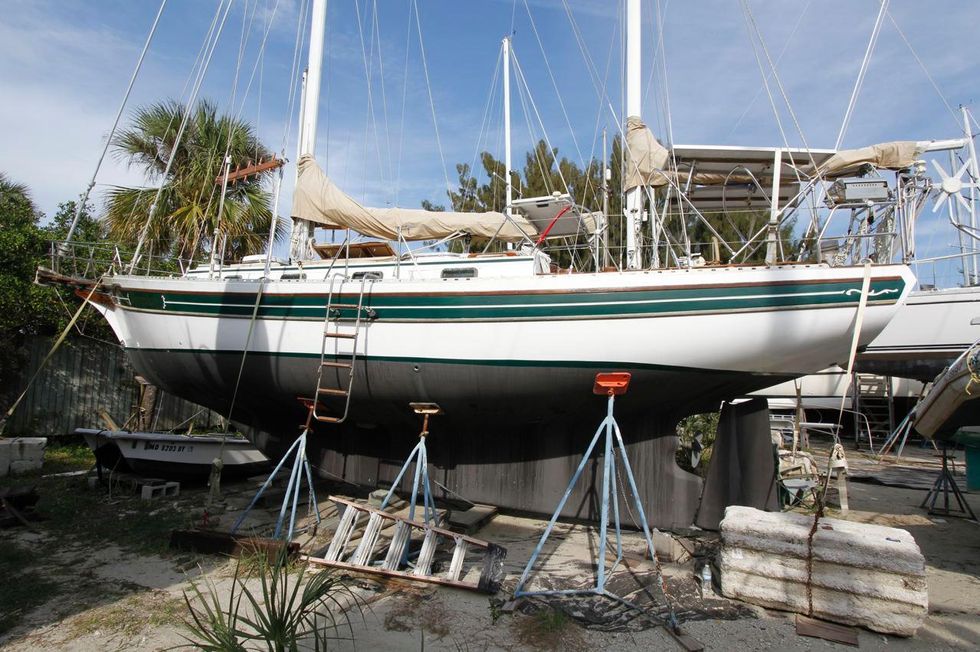
- Email Broker
- Call Broker

RECENT PRICE REDUCTION "Shenandoah" is a beautiful, timeless, cutter ketch. It features the obvious Gozzard influence with the classic trailboards, bowsprit and clipper bow. With the roomy accommodations and offshore sailing pedigree, this Bayfield is worth considering for anyone looking at worldwide cruising.
Anyone looking for a well-maintained and upgraded ketch will appreciate stepping aboard Shenandoah. Sellers have created an offshore cruiser ready for the next owner to provision and leave the dock. The cockpit comes with a full enclosure with clear panels or bug screen, comfortable cushions and full instrumentation. Sails have been reconditioned, standing rigging with Norseman's at bottom (replaced in '07) and running rigging. Live off the grid with solar panels, water-maker and 4.5 KW Northern Lights gen-set. For comfort - included is A/C, custom latex foam mattresses, on-demand hot water system and plenty of interior light & ventilation with the large butterfly hatch and numerous bronze opening ports. Hull side trim was awl gripped green in 2012.
Begin your adventure and make an appointment to see this Blue-Water Cruiser!
Specifications
Descriptions, basic information, dimensions & weight.
- View Option

Measurements
- L.O.A.: 40'
- D.W.L.: 30' 5"
- Beam: 12'
- Draft: 5' 5"
- Bridge Clearance: 53'
- Displacement: 28,000 lbs
- Keel: Full Keel
- Cabin Headroom: 6'3"
- Diesel: 100 Gal, 316 Stainless Steel
- Propane Tank(s): 2 - 20 LB w/Switch
- Fresh Water: 1 Tank 100 Gal, 316 Stainless Steel
- Holding Tank: 20 Gal, 316 Stainless Steel
- Westerbeke 63 HP, Model 63C (2002)
- Hours: 2400 (Approx)
- Balmar Alternator w/External Regulator
- Fuel Filter: Racor
- Shaft Seal: Drip-less
- Propeller: 3-Blade, 19" Max-Prop - Automatic Feathering.
- Deangelis Riser: This is a tube within a tube made out of Monel which keeps the engine compartment as cool as possible. Water comes in it at the engine side and goes around the exhaust pipe and is injected into the exhaust at the exhaust end of the riser. Cost was roughly $3,000.00.
Speed & Burn Rate
- Cruise 6.3 Knots @ 2800
- Burn Rate @ Cruising: 1 Gal/Hr (Approx)
Accommodations
The Bayfield 40 has a beautiful, traditional yet timeless, well appointed interior. You will find many "comforts of home" with features not found on current production sailboats.
Entering from the cockpit companionway are cabins to port & starboard with privacy panels and beautiful cabinetry for storage. Both have very comfortable, custom 5 1/2" Latex Foam mattresses. Access to the engine is under the companionway ladder. Forward of the starboard berth is the large settee with a drop-leaf table and more storage. To port, just forward of the aft berth is the Nav Station. Just forward of the Nav Station is the galley with a gimbal, 2-Burner Force 10 Stove and Sea Frost fridge and freezer (Separate Units) Included is a large stainless steel double sink and "On Demand" hot water heater which also services the head located forward of the galley. The head is equipped with a large separate shower and electric/manual Raritan toilet. The interior is kept light and bright with fresh air from numerous opening bronze ports and a large teak "butterfly" hatch.
Inviting and Comfortable Interior
- Sleeping for 6
- 1 Head w/Large Separate Shower
- A/C: 1 - Cruisa ir w/Re verse Cycle Heat. 16,000 BTU. Model SXR16
- Galley Forward and to Port
- Settee w/Table to Stbd
- Nav Station is to Port
- Teak and Holly sole
- Opening Bronze Ports w/Curtains & Screens
- Large Butterfly Hatch w/Additional Opening Hatches
- Custom Mattress: 2 - Latex Foam, 5 1/2" Thick w/New Covers (4/2014)
- Sink, Double, Large Stainless Steel
- Counter, Tile
- Stove/Oven, 2-Burner, Force 10, Gimbaled Propane
- Refrigerator, Sea Frost 12V, Top Load. Separate System from Freezer
- Freezer, Sea Frost 12V, Top Load, w/2 Plates for Consistent Freeze
- Microwave, Sharp Carousel
- Generous Storage
Electronics/Navigation
- Helm Location:
- Radar: Ratheon Pathfinder 48 NM (2000)
- GPS/Chartplotter: Garmin 3206 Networked to Garmin 3210 w/Depth and XM Weather Capable (2008)
- Wind: Raymarine Autohelm
- Depth: Raymarine Autohelm
- Autopilot: Simrad AP20 (2003)
- VHF Radio: Standard Horizon RAM3
- Magnetic Compass: Plastimo
- Interior Nav Station:
- GPS/Chartplotter: Garmin 3210, Networked to Garmin 3206 w/Depth & XM Weather Capable (2008)
- VHF: Standard Horizon, Quest+
- SSB: ICOM, Model IC-718 (2005)
- Multi Display: Raymarine Autohelm Wind & Depth
- Stereo: Jensen w/Salon & Cockpit Speakers
- TV: Sharp, HD w/DVD Player (2009)
Sails, Mast, Rigging, Winches
- Cutter/Ketch Rigged
- Dutchman on Main & Mizzen w/Sail Covers
- Sail Inventory: 1 - Main, 1 - Mizzen, Yankee and Stay-Sail Re-Conditioned
- Mast(s): Main & Mizzen, Aluminum, Keel Stepped Main, Deck-Stepped Mizzen
- Furler: 2 - Schaeffer 3100
Lewmar 2 - 50, 2-Speed (ST)
Lewmar 2 - 44, 2-Speed (ST)
Lewmar 4 - 40, 2-Speed (ST)
(ST=Self Tailing)
- Standing Rigging: 316 Stainless Steel with Norseman Fittings Below, Swaged at Top.
- Spinnaker Pole
Cockpit & Deck Hardware
- Dodger and Bimini
- Cockpit: Fully Enclosed w/Clear Panels and Screens
- Companion Way Doors, Teak w/Louvers & Screens
- Cockpit Table, Folding
- Cockpit Teak Grate
- Cockpit Cushions
- Cockpit storage compartments
- Lifelines: Double S/S Cable
- Stanchions: Stainless Steel
- Tow Rail: Slotted Aluminum
- Boarding Ladder, Mid-ship
- Dingy Davits
- Windlass: Lighthouse 1501 DWG,12V
- Anchor(s): 2 Total - 1 Bruce, 66 lb, 1 Fortress, 37T
- Chain/Rode: Bruce - 250' 5/16" HT Chain w/ 100 ' Nylon Rode. Fortress - 150' 5/16" HT Chain w/ 150 ' Nylon Rode.
- Anchor Roller(s): Dual, Mounted to Pulpit
- Raw Water Wash-down Pump Faucet
- Generator: Northern Lights 4.5 KW, M643K, S/N K09421, Approximately 2500 Hrs (2002)
- Distribution Panel: A/C & D/C
- D/C Control Panel, Heart Interface
- Shore Power: 30 Amp 120V Shore-power Receptacle
- Shore Power Cable
- Batteries: House - 3 AGM 4-D (2010) Start - 1 Group 27 (2014)
- Battery Switches
- Charger, Xantrex 25, 100 Amp 12V Charger (2005)
- Inverter: Freedom 25, Link 2000 Electrical Panels
- Solar Panel: 3 (2002)
- Alternator: Balmar
- Interior Lights
- Running Lights
- Anchor Light
- Spreader Lights
- Water-maker: SK, 20 Gph, Fully Modular w/Large Pre-Filters, Auto Reject & Shutoff, 110 Volt (2005)
- Hot & Cold Pressurized water
- Water Heater: On-Demand, Propane
- Water Filter Purification: Seagull IV
- Toilet: 1 - Raritan Electric/Manual (2008)
- Shower: Large Standalone w/Sump
Additional Items & Safety
- Dingy: Livingston, 10', (2006)
- Outboard: Yamaha, 4-Stroke, 15 Hp, Electric & Manual Start (2004)
- Barbecue: Magma, Propane
- Propane Tank(s) 2 20#
- Bilge Pump Manual
- Bilge Pump Automatic
- Fire Extinguisher(s)
- Carbon Monoxide Detector/Alarm: 2
- Misc. Life Vests
- Life Sling & Horseshoe
- MOM8-A Switlik, Fast Deployment MOB System
- EPIRB, ACR, Global Six (2008)
- Life Raft: Zodiac, 4 - Person
- Ship's Bell
- Shade Cover From Bow to Cockpit
- Hull & Deck/Non-Skid is Awlgrip (Hull 2013, Non-Skid 2014)
- Hull is Bonded
Broker Comments
Shenandoah is a good example of Bayfield quality and reliability. All upgrades and improvements performed with attention to detail. With solar panels, water maker and gen-set you can live "off the grid"! Make an appointment to see Shenandoah today!
If your dream is to Cruise or Live Aboard - Shenandoah is ready for you.
*Owners personal items are excluded from the sale
Watch Video:
Video_bayfield40cutterketch.

Presented by
Kevin welsh 15 listing(s).
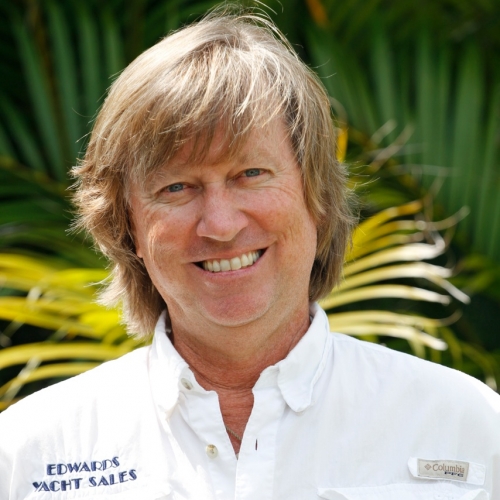
- 321.693.1642 727.449.8222
- View Profile
Manufacturer
Length Range Length Range
Year Range Year Range
Price Range Price Range
QUICK SEARCH BY:
Buyer services, featured yacht.
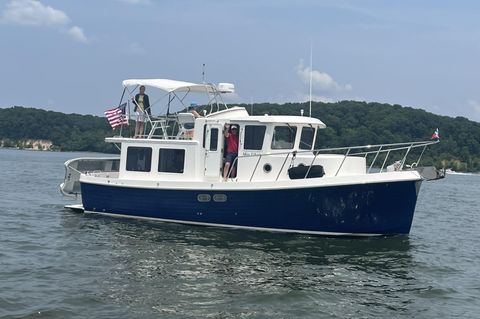
2006 American Tug 34 Pilothouse Trawler
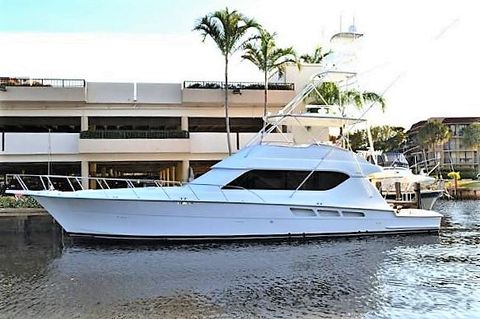
2001 Hatteras Sportfish
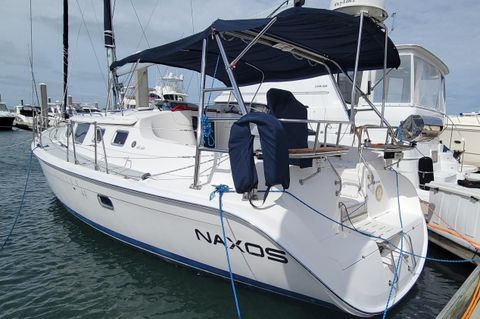
2007 Hunter 44 Deck Salon

1985 Ocean Yachts 55 Super Sport

1996 Tiara Yachts 3500 Express

2007 Sea Ray Sundancer 40
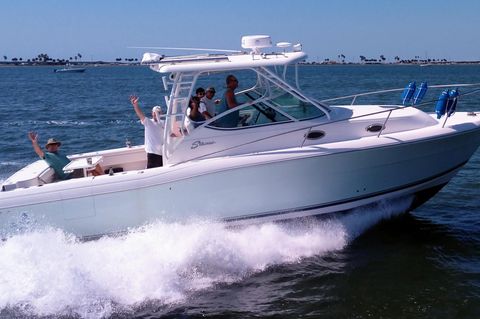
2021 Stamas 390 Aegean
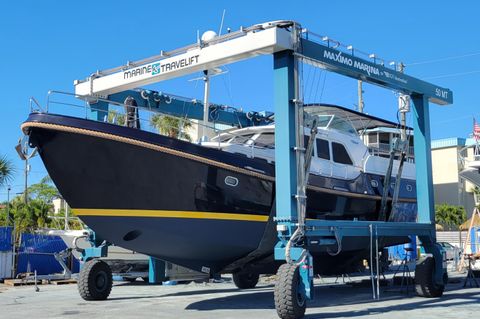
2002 Linssen 470 Grand Sturdy

2019 Monachus Issa 45

2007 Meridian 391 Sedan


1985 Morgan 31 Off Shore Fishing Cuddy

1981 Hatteras 48 Motor Yacht

2001 Wellcraft Martinique 3700
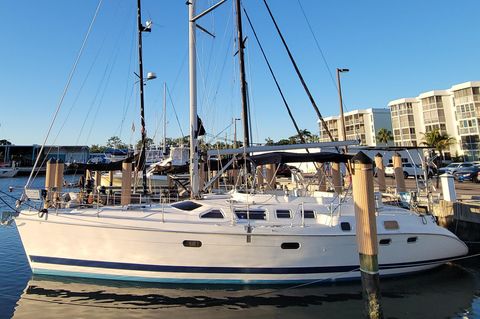
2002 Hunter 450 Passage
- Google Plus
- Boats For Sale
- Brokerage Services
- Sold Yachts
Whether you are buying or selling your next boat or your first boat, one of Edwards Yacht Sales 45+ Professional Yacht Brokers throughout the Southeast are here to assist. Since 2003 we have acted as our clients trusted advisor throughout the entire process from shopping, to making an offer, to sea trial and survey, to closing.
Corporate Office: 510 Brookside Drive Clearwater, FL 33764
Email: [email protected]
Phone: 727.449.8222 Toll Free: 866.365.0706 Fax: 727.298.0456
Copyright © 2024 Edwards Yacht Sales Do Not Sell My Personal Information Powered by YachtCloser

We have placed cookies on your device to help make this website better.
You can use this tool to change your cookie settings. Otherwise, we’ll assume you’re OK to continue.
Some of the cookies we use are essential for the site to work.
We also use some non-essential cookies to collect information for making reports and to help us improve the site. The cookies collect information in an anonymous form.
To control third party cookies, you can also adjust your browser settings .

Jordan Yacht Brokerage
We Never Underestimate Your Dreams
Bayfield 36 review: classic marathon runner.
Certain styles never go away. There is always the lure of the pirate ships of old with their trailboards, bowsprits, and clipper bows. And at every sailor’s essence are certain pirate ideas, the romance of adventures on the high seas. The look speaks of journeys to far off lands for exciting adventures. That is what the Bayfield and now Gozzard Yachts stand for. In 1970, Ted and Hayden Gozzard started Bayfield Yachts in a yard in Bayfield, Ontario, Canada. Their first offering was a Bayfield 25. The company became synonymous with the classic, clipper bow look in Canada. They followed the Canadian innovations of C&C using balsa cored fiberglass. In 1981, Ted left the company to found his own builder, Gozzard Yachts. Hayden stayed on and in 1985 designed his first and only Bayfield, the 36. Ted continues to run Gozzard Yachts with his sons while the Bayfield factory burned down in 1988 halting production. These 36-footers have an excellent reputation in Canada, more well known than here in the USA. Her interior is arguably the largest you will find on a 36-foot sailboat. The roomy accommodations combined with her offshore sailing pedigree make her one of the best choices around in this range for a serious offshore yacht.
First Impressions Hayden stayed with Ted’s principles and look. The 36 is a fulled keeled, clipper bowed, trailboarded cruiser. From the dock, it’s interesting to compare and contrast her to the more modern 36 Gozzard that Ted has gone on to design. We have had the luck of selling both a Gozzard 36 and representing a Bayfield 36 within the last year. They have similar lines. The 36 Bayfield is really 41 feet LOA with her 5′ bowsprit as they use LOD as the model number for modesty. She is the definition of a big 36-footer. The heart shaped stern is lovely and the low freeboard sheer just enough. I can always pick out Bayfields and Gozzards by the molded cove stripe and inset name. The aluminum toerail jars with the overall classic look and lowers the maintenance threshold. The cabin trunk has 5 portholes and is traditionally low and squarish. Underneath, she has a long keel with a bronze heal and attached rudder. This design is the source of her performance skills and drawbacks. Newer Gozzards moved on to a modern cutaway forefoot and even separate rudder arrangements. The Bayfields still chose to keep the traditional underbody with the classic style. But a stout cutter has its advantages, especially in the trades.
Construction Bayfield like Gozzard today had a good reputation for building quality yachts with attention to detail. They built the 36 with standard roving mat layup and a balsa cored deck from the influence of C&C. There are plywood inserts for strength where deck gear attaches. The chainplates attach to either to the main bulkhead or to special stubs tabbed to the hull. The bulkheads are tabbed in. The ballast is a keel shaped lead insert secured by resin inside the fiberglass keel cavity. They did use a fiberglass liners with balsa core to reinforce tread areas. The hull deck joint is bulwark style fastened with 5200 and 5/16″ bolts and aircraft locking nuts on six inch centers. Cleats and stanchions fasten into the inner face of the bulwark. Chocks and cleats along the aluminum toerail are excellent for running lines. The fuel tank is aluminum. The holding and water are plastic with two for water.
On Deck Forward the chainlocker is a watertight bulkhead only accessible from deck. Bayfield 36’s did not have a windlasses originally. Owners used the chainlocker to store an anchor and probably tied the anchor off to the chock in the toerail near the bow. Most will have been upgraded to an electric windlass by now which is a safe and very worthwhile installation. The shrouds tie inboard on the outer deck edge with skinny sidedecks. The deck has molded non-skid that may be wearing thin 20 years on now. The quarterdeck steps up as you walk aft to enter the cockpit.
These are true cutters (meaning the mast is further aft than you will find on a sloop) with single spreader Isomat spars. While not commissioned with a traveler, that is an easy upgrade along the trunk cabin. A single backstay attaches neatly aft of the cockpit. The cockpit is brightened by her teak railing, lockers, and trim. A propane locker is portside of the helm. The starboardside cockpit lazarette opens for storage and underneath access to the quadrant. The steering was the ubiquitous Edson pedestal system. The helm is comfortable with a raised seat. The companionway has two louvered swing doors with a screen and inserts behind. The sill is about a foot and not bad for underway. The doors snap open, and you can insert a bottom hatch so no water goes below. The doors also snap closed to prevent rattling or unexpected opening. A keyhole in the starboard door locks the boat up.
Down Below You will not find a more accommodating interior on any 36-foot sailboat. She has 6’3″ headroom throughout with a tub shower, a feature not always found on even on 45-foot cruisers. In the saloon, the 36 Bayfield and Gozzard are much different. The Bayfield has a traditional berth forward and aft while the Gozzard has the saloon forward. There is a nice aft stateroom portside and the master stateroom forward with an offset double. The navigation station is across from the head and has a seat that folds under the Formica table. The woodwork is a symphony of light teak. Framing the salon are two half bulkheads. Paired with each partial bulkhead is an interesting carved column which doubles as a clever handle offshore.
You will notice she has a unique butterfly hatch above the saloon. This sunroof has two doors that swing up and lay open. The hatch opens up the interior in calm water, but make sure she stays closed in a foul blow. There are two hatches in the galley and another over the aft stateroom. Two hatches are forward over the master stateroom. Combined with 10 portholes in the cabintrunk, the Bayfield 36 is well ventilated and naturally lite. While storage area is plentiful, Bayfield could have done a better job of providing access to the storage. To access the storage easier, you might see new doors, enlarged existing ones, or removed drawers. In the galley, an owner pointed out you have to reach way down into the storage holes. He added side doors and levels to ease this difficulty. Underneath the starboard settee. He noted how he had to enlarge the access door. The door was cut out too deep back making it uncomfortable to reach in. He cut away another 2 inches from the paneling.
Engine A Yanmar 4 JHE 44-hp four-cylinder diesel is standard with access behind the companionway ladder and also a removable plate in the aft stateroom. For a mid to late 1980’s yacht, this Yanmar was a wonderful choice and is probably still in most of the yachts. Access could be better. The engine room is underneath the cockpit and not too accessible from the back and sides. The starboardside combing folds up for access but mostly to the steering behind the engine. Re-powering one would not be too hard with the large companionway and easy front and top access.
Underway The Bayfield 36 and her cousins will not win you any races. The 36 is a heavy cruiser meant to go offshore. Owners readily admit she is not the best in light winds. But when it gets to 12 knots she really gets going. This is not a fault but simply what she was meant to do like a marathon runner versus a greyhound. Sven Donaldson’s excellent review says, “While by no means an ocean grey-hound, this boat will surprise a few sailors with its legs. The key, of course, is plenty of sail area (870 square feet in the three working sails), sail area that really comes into its own on reaching courses.” Her sailing ability really will shine in a tough blow offshore with her cutter rig and a reefed main. The main is handled by two sheets instead of a traveler. While some owners like this arrangement, you might want to think about a traveler as an upgrade if not already installed.
Conclusion What a shame! While the economy was poor, a 1988 fire destroyed Bayfield Yachts factory. According to the owner Ernie, a Bayfield dealer, Neptune Marine, and some partners bought the molds and tried to keep going. After a couple years, they went under. Ernie says,” I have the last Bayfield 36 to hit the water, Stonecutter II. I saved it from the crusher by being the last person to have his hand up at the auction of Neptune Marine’s assets.” With some consolation, Gozzard Yachts continues the design lineage and the boat building tradition in Ontario. These Bayfield 36’s are great cruisers for the Bahamas, Caribbean, and afar. They won’t get you anywhere fast, but they sail dry and steady and hold strong in heavy weather. Typically, you’ll see them for around $100,000 on the used market.
References http://www.wind-borne.com/Bayfield%20Review.htm http://cruisingandlivingaboard.net/wiki/index.php/Bayfield_36
8 Replies to “Bayfield 36 Review: Classic Marathon Runner”
Can anyone advise me where to locate the propane bottle on a 36ft Bayfield. At present I have still the alcohol stove and would like to move to propane. DuncanMcKeeve SV Elnamea
How about in a cockpit locker?
Duncan, I am able to place a regular size (20lb.) BBQ tank in the port cockpit locker. And I carry a smaller 13 lb. for the BBQ grill on the stern rail. If you like, I could send you pics.
Thank you, yes I would love to see the pictures so perhaps I could copy your ideas.
best regards Duncan
Did you make the change, and did you have any problems with fitting a replacement stove? We’re in the market for a 36 right now, but don’t like the alcohol stove.
We have a Bayfield 36 with a propane stove. Our propane tank is in a special locker on the port side in the cockpit, vented overboard. It’s located in the alcove between the port seat and the captain’s seat, recessed into the moulded cockpit. But we ordered it during construction. Valerie. (Hey, Paul, our Bayfield 36 is going on the market! “Waegbora” . . . )
Hi Valerie: Can you let me have some details direct to my e-mail?
Paul [email protected]
I want to install a windless on my 36 any suggestion
Leave a Reply
Your email address will not be published. Required fields are marked *
Save my name, email, and website in this browser for the next time I comment.
- New Sailboats
- Sailboats 21-30ft
- Sailboats 31-35ft
- Sailboats 36-40ft
- Sailboats Over 40ft
- Sailboats Under 21feet
- used_sailboats
- Apps and Computer Programs
- Communications
- Fishfinders
- Handheld Electronics
- Plotters MFDS Rradar
- Wind, Speed & Depth Instruments
- Anchoring Mooring
- Running Rigging
- Sails Canvas
- Standing Rigging
- Diesel Engines
- Off Grid Energy
- Cleaning Waxing
- DIY Projects
- Repair, Tools & Materials
- Spare Parts
- Tools & Gadgets
- Cabin Comfort
- Ventilation
- Footwear Apparel
- Foul Weather Gear
- Mailport & PS Advisor
- Inside Practical Sailor Blog
- Activate My Web Access
- Reset Password
- Customer Service

- Free Newsletter

Ericson 34-2 Finds Sweet Spot

How to Sell Your Boat

Cal 2-46: A Venerable Lapworth Design Brought Up to Date

Rhumb Lines: Show Highlights from Annapolis

Solar Panels: Go Rigid If You have the Space…

Leaping Into Lithium

The Importance of Sea State in Weather Planning

Do-it-yourself Electrical System Survey and Inspection

When Should We Retire Dyneema Stays and Running Rigging?

Rethinking MOB Prevention

Top-notch Wind Indicators

The Everlasting Multihull Trampoline

What Your Boat and the Baltimore Super Container Ship May Have…

Check Your Shorepower System for Hidden Dangers

DIY survey of boat solar and wind turbine systems

What’s Involved in Setting Up a Lithium Battery System?

The Scraper-only Approach to Bottom Paint Removal

Can You Recoat Dyneema?

How to Handle the Head

The Day Sailor’s First-Aid Kit

Choosing and Securing Seat Cushions

Cockpit Drains on Race Boats

Re-sealing the Seams on Waterproof Fabrics

Safer Sailing: Add Leg Loops to Your Harness

Waxing and Polishing Your Boat

Reducing Engine Room Noise

Tricks and Tips to Forming Do-it-yourself Rigging Terminals

Marine Toilet Maintenance Tips

Learning to Live with Plastic Boat Bits
Sailboat reviews.
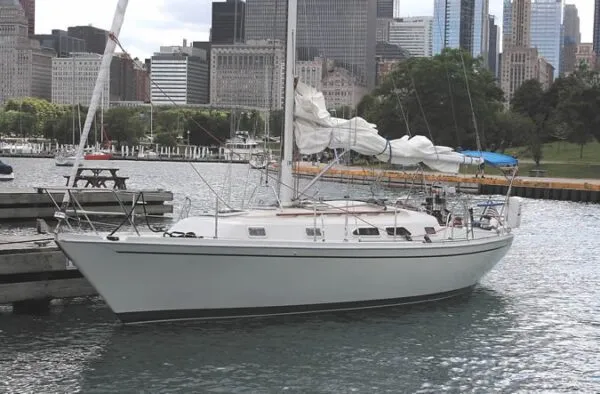
Open Transom Pros and Cons
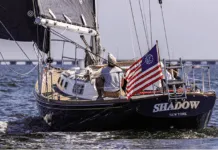
Mailport: Charley Morgan, Locker Safety, Fast Bottom Paint
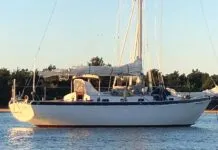
Rebuilding a Cape Dory 36 Part V
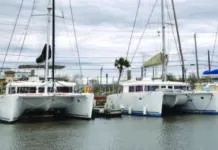
Big Cat Concerns
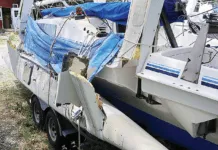
Buying a Used Multihull

Mailport: Propane Hose Chafe, Multihull Prices, Farrier F33XC
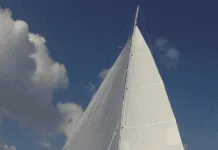
Rebuilding a Cape Dory 36 Part IV
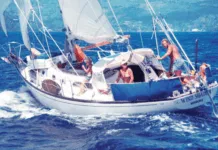
Do You Really Need a Bigger Boat?
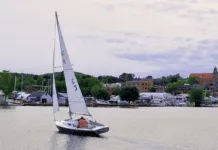
Mailport: Carl Alberg, Tinned Wire, Fiberglass Durability
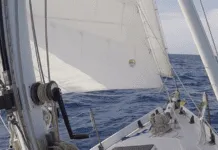
Rebuilding a Cape Dory 36 Part III
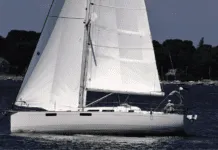
Mailport: X-yachts, Soverel 33, tropical storms
Latest videos.
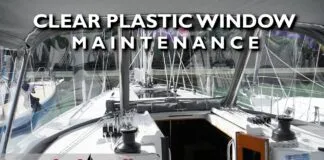
What’s The Best Vinyl Window Cleaner for Your Boat?

40-Footer Boat Tours – With Some Big Surprises! | Boat Tour

Electrical Do’s and Don’ts

Bahamas Travel Advisory: Cause for Concern?
- Privacy Policy
- Do Not Sell My Personal Information
- Online Account Activation
- Privacy Manager


- Forum Listing
- Marketplace
- Advanced Search
- About The Boat
- Sailboat Design and Construction
- SailNet is a forum community dedicated to Sailing enthusiasts. Come join the discussion about sailing, modifications, classifieds, troubleshooting, repairs, reviews, maintenance, and more!
Bayfield 25, how seaworthy?
- Add to quote
I've got a nice little Bayfield 25 and im wondering how seaworthy the boat is. It seems pretty solidly built. It is a full keel with the rudder attached on the back of the keel with the prop in a cutout in the keel. The boat has a running Yanmar 1GM diesel, but i know i need to clean or replace the fuel tank as its been setting for 3 years. Id like to take this boat to Bermuda if it can handle it.
I should preface this by saying I've sailed alongside and past these boats, but not on one.... I think they are tough little boats, but I'm not sure they were truly meant to be offshore cruisers. Easy to handle, certainly, but motion could be uncomfortable esp in the Gulf Stream, and it wouldn't be a quick trip. Her shallow draft will advantageous in certain areas, obviously, but not necessarily at sea. A dash across to the Bahamas? Probably, with the right weather window.... Bermuda I'm not so sure.....
I know the draft is going to help me alot around my home port (Charleston SC). I want to take a sailing trip to Bermuda within the next couple of years and i figured this boat would be able to do it.
Hell, people have done longer, rougher trips on lesser boats, I suppose.... It will likely as not come down to your own tolerance and abilities assuming the boat itself is otherwise sound and well-prepped.
The boat is about to undergo a refit for the few things that it needs. Im going to remove the roller furling on the headsail so i can hank on smaller jibs. The main has 2 reef points in it and one is kinda high. The boat has wheel steering on it, so im thinking a belowdecks autopilot system for it. From what ive found out about the boat is should be able to do the trip to Bermuda.
Oh yea, the other major thing i wanted to find out is can the boat be beached? Could i take it and anchor over a sandbar, wait for the tide to go out and clean the bottom? Would it get any damage?
There have been a couple discussions in the past few weeks about going offshore in small boats that you might want to look at, but in a general sense, anecdotally its easy to find stories of people going offshore in boats that are less seaworthy than the Bayfield 25. But if you read enough, you find that historically lots of small boat sailors went missing, or needed rescue and historically the small boat sailors that took off on offshore voyages were generally very experienced seamen. When you ask about sailing a Bayfield 25 to Bermuda, its all about risk management and how much risk you personally are willing to take, and how good a sailor you are, and how expeienced you are in handling the Bayfield in heavy going. To me, a Bayfield 25 would be an extremely poor choice for this kind of trip. These were boats that were optimized to get a lot of room on a small boat, rather than as a good sailing, offshore comfortable design. For example compare the Bayfield to something like a Folkboat with an equal displacement and length but 4 foot draft vs the Bayfields 2'11 draft and 2300 lb ballast vs the Bayfields' 1450 lbs, and the Folkboat's 7'6 beam vs the Bayfields' 8 foot. So, comparatively speaking, the Bayfield with its extremely low ballast to displacement ratio, extremely shallow draft, wide beam carried to its full ends, and corky motion, it would be very tough boat to bring through a storm. These boats do not exactly have a good reputation for being well constucted. They are heavy but much of thier weight comes in the form of heavy interior components rather than robust structure or ballast. The Bayfields' high drag and small SA/D would make for a very slow trip to Bermuda, which means that you would need to carry a lot more supplies, than a longer or better designed boat of this displacement. The weight of those supplies would further reduce motion comfort and seaworthiness. The slow passage time would also mean that you would be at sea too long to acurately predict the weather window that you will encounter en-route and that means you higher risk of ending up in foul weather. But again, while the Bayfield 25 would be very close to the bottom of the list of boats that I personally would consider taking to Bermuda, it comes down to how much risk you personally are willing to take. To quote Clint Eastwood's Dirty Harry, I guess the real question is, "How Lucky do you feel?" Respectfully, Jeff
Jeff_H said: There have been a couple discussions in the past few weeks about going offshore in small boats that you might want to look at, but in a general sense, anecdotally its easy to find stories of people going offshore in boats that are less seaworthy than the Bayfield 25. But if you read enough, you find that historically lots of small boat sailors went missing, or needed rescue and historically the small boat sailors that took off on offshore voyages were generally very experienced seamen. When you ask about sailing a Bayfield 25 to Bermuda, its all about risk management and how much risk you personally are willing to take, and how good a sailor you are, and how expeienced you are in handling the Bayfield in heavy going. To me, a Bayfield 25 would be an extremely poor choice for this kind of trip. These were boats that were optimized to get a lot of room on a small boat, rather than as a good sailing, offshore comfortable design. For example compare the Bayfield to something like a Folkboat with an equal displacement and length but 4 foot draft vs the Bayfields 2'11 draft and 2300 lb ballast vs the Bayfields' 1450 lbs, and the Folkboat's 7'6 beam vs the Bayfields' 8 foot. So, comparatively speaking, the Bayfield with its extremely low ballast to displacement ratio, extremely shallow draft, wide beam carried to its full ends, and corky motion, it would be very tough boat to bring through a storm. These boats do not exactly have a good reputation for being well constucted. They are heavy but much of thier weight comes in the form of heavy interior components rather than robust structure or ballast. The Bayfields' high drag and small SA/D would make for a very slow trip to Bermuda, which means that you would need to carry a lot more supplies, than a longer or better designed boat of this displacement. The weight of those supplies would further reduce motion comfort and seaworthiness. The slow passage time would also mean that you would be at sea too long to acurately predict the weather window that you will encounter en-route and that means you higher risk of ending up in foul weather. But again, while the Bayfield 25 would be very close to the bottom of the list of boats that I personally would consider taking to Bermuda, it comes down to how much risk you personally are willing to take. To quote Clint Eastwood's Dirty Harry, I guess the real question is, "How Lucky do you feel?" Respectfully, Jeff Click to expand...
bayfied 25 I also have a Bayfield 25 and yes much smaller boats have made it,it is a very solid and exellent crusier and if you did not push and waited for decent wheather you would be fine and if you had some experaince and did not over do it you could wheather a storm I have thought about doing it and I am in Lagoon city on Lake Simcoe north of Toronto
Johnhr said: I also have a Bayfield 25 and yes much smaller boats have made it,it is a very solid and exellent crusier and if you did not push and waited for decent wheather you would be fine and if you had some experaince and did not over do it you could wheather a storm I have thought about doing it and I am in Lagoon city on Lake Simcoe north of Toronto Click to expand...
We got hit with a squall many years ago on Senaca Lake in NY. I saw a line of white advancing across the lake and, in our yawl of the time, dowsed the main and pulled the mizzen in tight and took it nose on. The wind (55 mph reported at a nearby airport) hit us a minute before the standing wave. A Bayfield 25 singlehander was reaching ahead of us and he was rolled 360º, popped up and was rolled a second time. Anyone can be inattentive - he said he never saw it coming as was below grabbing lunch with a lashed tiller. The only damage was to him - a gash on his forehead - and the contents of the Porta-Pottie discharged into the cabin along with the contents of several galley lockers and many gallons of water that entered the open companionway. Does it prove anything? No. Just that you can't assume the boat . . . any boat . . . knows what to do if you don't. Other boats may have been demasted or certainly had some sail and rigging damage. But some other boats are entertaining enough to sail that you pay attention to sailing instead of just making boring progress. That particulay B25 was the slowest boat on the lake. They are well made but certainly not optimum lake boats. For a trip to Bermuda? Yeah, I'd feel better in something designed for blue water and a Bayfield 25 is that; small but rugged. Personally, I'd be comparing them to Pearson Ariel 26 and Triton 28's (or a Bristol 27) to find an individual boat in good shape with proper gear.
I agree with Jeff and others about luck playing possibly too much a part of such a trip. As far as careening, see this link for another solution: http://www.sailnet.com/forums/gear-maintenance-articles/20077-giving-your-boat-some-legs.html Legs like this have been used on several boats that I know of in that size range, a Vega 27 as well as Atom which is a Triton. Brian
umm actualy Jeff talked about actual draft, ballast ratio, beam and hull shape, sounds a lot like facts to me not opinons. He suggested that a folkboat had better numbers and they of course are a full keel displacment boat so not sure your second comment holds water. Another poster said, which scares the heck out of me, that a Bayfield 25 did one or two complete rolls in 55 MPH wind ! They can be a fun little boat but they do have their limitations as all boats do.
More or less correct. The less is that my second comment is still true because as I said "as several of his posts can testify to". The fact that he compared two full keel boats and preferred one over the other does not make my second comment wrong. And in any case the "facts" as you called them - which in this case are just the basic numbers relating to draft, beam and ballast are the facts. What people (not just Jeff_H) do with these numbers are what constitutes the "opinions". In general arm-chair sailors tend to focus more on the numbers - as that is all they have. Been there - done that. All of these numbers and ratios are mainly a help to the yacht designers. I don't know if mere mortals buying a boat should worry that much about it. The really interesting thing is that the Bayfield 25 would seem to have more in common with Jeff_H's preferred type of boat than the Folkboat which is in fact closer to what I would prefer. But that's just MY opinion....
Eric, The one truth here is that you don't know much about my preferences at all. I have only have one strong bias, that is towards boats that sail well and by the term 'sail well' I do not simply mean that they are fast. I use that term to mean, are easy to handle, have reasonably comfortable motions, sail reliably in a wide range of conditions and so on. I am very much a fan of traditional sailing craft, by which I mean both cruising boats and working boats that derive from the lessons learned from working water craft. That includes boats that truly have full keels and not some aberation that derives from some racing rule or some marketing gimmick. You are very mistaken when you say that I have a prejudice against full keels. I do not have a blanket prejudice against full keels, but I also have enough experience sailing on a wide variety of boats that have had full keels to understand that they are not the panacea that they are often portrayed to be. I also have spent enough time sailing on boats that have a deeply cut away forefoot and rudder posts located far from the transom to understand that these are not full-keeled boats at all, and that they do not behave like full keeled boats, and frankly, in my experience and opinion, result in compromises that make them far less desirable in most ways than either a more traditional full keel or a well designed fin keel. If I have a prejudice against a keel type, it is what used to be (when I was a kid) referred to as a fin keel with attached rudder, and which by any name is a keel whose bottom approached 50% of the length of the boat and which has an attached rudder. To me, these are the worst of all worlds and in most cases lack the virtues of either a full keel or a fin keel with a detached rudder. And yes, it is also true that I personally like well designed fin keel/ spade rudder boats (whether that rudder post or skeg hung). I use the term 'well-designed' because there are a lot of really poor fin keel/spade rudder designs out there. I frankly prefer fin keel/spade rudders for my own personal boat and consider them better suited for my current needs than a full-keeled boat. I also think that most of the sailors who come on Sailnet are sailing in venues and manners where they would be better served by a boat with either a fin keel/spade rudder or else with a keel/centerboard configuration. (I say 'most' because there are folks on these forums sailing in venues, with specific sailing goals, or with aesthetic preferences that would lean them towards other keel/hull configurations.) Unlike you, who says he is still looking for his first boat, I have owned 17 boats in my life. These include a 1939 Stadel cutter, a design that derived from a 19th century working pilot boat and was as full a keel design as you could imagine, a 1949 Swedish Folkboat, CCA era boats, IOR era boats, MORC boats from a range of periods, and early IMS (MHS) era boats. I have had near unbridled use of dozens of boats in my life, and raced and cruised on perhaps a hundred different classes of boats in my life. You and I are in agreement that what I write is only my opinion and is limited by my own limits of knowledge, but that said my opinion is based on 47 years of comparing the behavior of these many boats that I have sailed on, a whole lot of reading and attending yacht design symposiums over a 48 year period of time, my training as a yacht designer, and my experience working in naval architect and yacht design offices. Throughout all of those experiences, I have carefully studied the behavior of one design feature relative to the other and from that I have formed my opinions, and yes, i know these are soley my opinion and yes I know they reflect the biases that reflect the types of sailing that I personally have done, and perhaps more importantly, often reflect and is limited by the types of sailing that I have not done and have no intention of doing. And despite all of that experience, I know that there are holes in my knowledge, and areas where I am mistaken. I understand that I am very much an amatuer, a dilettante, that there is a lot that I don't know, that I make mistakes, remember things incorrectly, and that there are a whole lot of folks out there who know a whole lot more about these things than I ever will. Like most folks, I come here to share my experiences as a way to return the favor to those people who generously shared knowledge with me along the way, but equally importantly to continue to learn, and one way to learn is to engage in informed and intellectually honest discussion, where dubious opinions can be corrected or clarified, and missing knowledge added to. As to your comment, "that he does not understand yacht design as well he thinks", I suggest that blanket statements like that add little to a discussion. If you think that I have made a mistake in my comments address that mistake. We both might learn from that process. But no one learns anything from baseless ad-hominem comments and I say 'baseless' since you clearly really know very little about how I view my knowledge of yacht design. Which brings me back to the topic at hand, in a general sense you are very right that simply relying on the numbers can be a little or even very misleading. But in this case, getting down to specifics of the boat in question, the numbers are so skewed relative to the norm or even to a well-known benchmark for a small full-keeled offshore cruiser, (the Folkboat) that I think the numbers are very relevant to someone weighing a decision to go offshore on the boat in question. And lastly, when you say, "The really interesting thing is that the Bayfield 25 would seem to have more in common with Jeff_H's preferred type of boat than the Folkboat which is in fact closer to what I would prefer." it shows that you do not understand my viewpoint at all. The types of boats that I prefer includes boats like the Folkboat. They were simple, seaworthy, well mannered little boats that could sail well across a very wide range of conditions. That description and my preferences do not include boats like the smaller Bayfields, which (in my opinion) I generally consider to be charactures of traditional sailing craft, rather than being the kind of well balanced design concept that traditional water craft tend to be. To my eye, and in my opinion, Bayfields, and other character boats of that era and thier ilk, eschew the lessons learned from geniune traditional watercraft which have designs evolved based on hundred of years of experience in harsh environments. Respectfully, Jeff
Jeff and all you fin keel, spade rudder fans might find this of interest and this not my opinion, this is objective observation: The last time I sailed Paloma up to Southern Yachts (a mega-shipyard off of Galveston Bay), for a bottom job and new zincs, a full 60% of the sailboats blocked up on the hard were fin keel/spade rudder boats, with bent rudder posts or separated keels. The biggest batch of bent rudder posts were on big, expensive Beneteaus while most of the separated keels were a variety of fin keelers. One of the separated keels was an Irwin that had hit a submerged object low on the keel and it pulled the keel away from the hull enough that you could put your hand between the hull and the forward edge of the keel. And, as well you might guess, none of the keel-hung or skeg-hung rudder boats were among the disabled. If you like the Bayfield - buy it. The cockpit is kind of small and deep, making it a bit hard to see over the cabin trunk, but it's a sturdy little boat that will take you most places you'll likely go - not quickly, but it will make it there. And, don't worry about the story of the Bayfield 25 that barrel rolled twice in 55 knot winds - there's a whole world of boats in that size range that would not have survived the first roll.
Agreed and double agreed!!! That's why the boats I've owned over the years have all been encapsulated lead keels some full keeled (a beautiful Bayfield 29 - way too much wood to take care of and an Eastward Ho 24 - a 24 foot boat ought not to displace 7,200 lbs) and the rest have been modified fin and skeg hung rudder boats (like Paloma).
A no win situation Yep Jeff_H has more experience sailing - as I have stated specifically in other threads. I did not mean to imply that he was an armchair sailor - it was a somewhat badly timed "sidebar" referring to the fact that a lot of people on this forum worry way too much about the numbers relating to yacht design. I also did not mean to attack him personally - as stated in my very first post on this forum I have no doubt he means well. I do apologize if it came across as a personal attack. On the other hand I did not add two "Stick out Tongue" smiley faces as he did at the end of every paragraph on one of his recent posts. Jeff_H considering you are listed as an "Architect" in your biography your experience/training in yacht design surprises me. Especially considering some of your statements. And especially so, considering some of the conclusions you come to regarding boats and stability/full keels etc. Your acknowledgement that you are not - perfect or all knowing about yacht design is also surprising considering how point blank condescending a tone you use to answer peoples questions. But thats life and we should just leave it at that. And we should leave it at that as this is way off topic from what this thread is about. Because this is a no win situation. I think this forum will be a useful tool as I hopefully do purchase my first large sailboat in the near future. But I will not respond on this thread anymore about this matter. I believe private messages are available for this sort of thing. If it needs to be addressed at all - which I don't think it does. Obviously however great a guy Jeff_H is - however much experience he has - his post's rub me the wrong way. I will try to control that before I click "Submit Reply" in the future. thanks, Ericb
Careening is no big deal if you have the right boat. I have an Islander Bahama 24 that I have careened 4 times. It has 7'8" beam and a full keel with a cutaway forefoot. The rudder is keel-hung. The keel is encapsulated lead in a thick layer of glass. The draft is 3'6". The boat sits at an absurd angle of heel when careened, but on a sloping muddy beach with good tidal range and no wake, I was able to do it without incident. I would careen the Bayfield 25 confidently in a calm harbor. Mind the weather and tides. Fridays and Saturdays are generally bad days for this due to motor boat wakes. Make sure she lies down right side up, this can be done by making a halyard fast to a bulkhead. I am not sure about the laws of careening, I researched them heavily, reading a lot of material and contacting a lot of government agencies, I could not find any info that was meaningful. I would assume that it is illegal, and act accordingly. I do know for sure that the EPA would charge you fines for painting on a tidal beach.
Another alternative is making fast to a pier as the tide recedes... this was the typical practice for years, but for some reason has gone out of favor.
Hi I live in Bermuda,, with the right weather you will be fine, i have seen sailors rock up on much less of a boat,, bayfields are great,, im looking to get one here to purchase,, any change you want to sell yours when you get here lol
2008 - He's probably been there and back again.... Of course the boat would make it, I lived there and saw a couple of them, one at Ferry Reach the other at Jews bay.
I know this is a super old thread, but I don't see any point in opening a new one for my simple question. I am wondering if any body can provide details on a Bayfield 25 with regards to real world VMG upwind or any other related information. Relative Course Made good combined with speed made good against the wind would work to. I can manage basic trig. I am trying to determine if I can realistically over come local currents (which are a known factor) under sail with these boats. Even estimates from knowledgeable sailors who haven't sailed these boats but have observed them would be useful. Or, any direction on where I could find this info would be helpful too (short of calling Gizzard yachts). Typical July wind speeds in my neighbourhood are 10-15 knots. The rest of the months are windier.
Lots of variables here... I've not sailed one of these, but FWIW here's a couple of thoughts... Very shoal draft/shallow low-lift keel, would expect a fair bit of leeway at all times (current or not). Maybe possible that current may have a slightly lesser effect for same reason (less area for current to act on) but the increased leeway is going to be problematic anyhow. If the job description is 'upwind and up current' most of the time, not sure this is the boat for you unless you're in serious 'cruise' mode. Of course, if the currents are tidal (ie reversing during the day) your timing can make a world of difference. However I don't know the tidal influence on the St Lawrence. Certainly the state of the tide affects BC's Fraser river, but it truly only reverses in light runoff conditions.. during spring melts and heavy rains it simply slows down some.
Faster said: If the job description is 'upwind and up current' most of the time, not sure this is the boat for you unless you're in serious 'cruise' mode. Of course, if the currents are tidal (ie reversing during the day) your timing can make a world of difference. However I don't know the tidal influence on the St Lawrence. Certainly the state of the tide affects BC's Fraser river, but it truly only reverses in light runoff conditions.. during spring melts and heavy rains it simply slows down some. Click to expand...
So are these boats good performers down wind? I'm not a keel boat racer, so I'm kind of bad at interpreting PHRF numbers. When I compare a Bayfield 25, to the other boats on my short list, all within 2' of waterline length, the Bayfield is the second fastest boat. The boats I'm comparing it to are a Tanzer 22, a Catalina 22, a CS22 and a Sirius 21. These boats can all be trailered behind a Santa Fe and can all be purchased in good shape for less than $10k cdn. The Tanzer 22 is by far the fastest, no doubt at least partially due to the fixed fin keel and low profile cabin top. It was showing about 15 seconds faster than the Bayfield. The Sirius 21 and CS 22 were both showing about 6 seconds slower than the Bayfield. The CS 22 had the shortest waterline length of the bunch at 18' but also the highest ballast/displacement ratio at 50%. The Sirius 21 had the highest SA/D at 20.75 and the lowest ballast displacement at only 26%. By far the slowest of the bunch was the Catalina 22 at around 24 seconds slower than the Bayfield with only 12" less waterline length. So is the Bayfield making up the time against these other boats at 90-180 degrees off the wind? Am I using a flawed Handicap numbers? I definitely understand the hydrodynamics behind the low aspect keel and why it shouldn't theoretically provide as much lift, but...? A couple of observations is the Bayfield has a fairly high SA/D for this type of boat at over 20 and is the only one of the bunch with a lead ballast.
PHRF numbers aside, I have a hard time picturing a B25 sailing faster than a C22, assuming both well-sailed, and esp upwind. But they are 'cute' in their own way and certainly have more headroom than the others, so once again it's down to the compromises you're willing to make vs your priorities..
The boat is underpowered for the Bahamas. Add an outboard on the stern for extra power.
- ?
- 173.9K members
Top Contributors this Month

IMAGES
VIDEO
COMMENTS
Bayfield Boat Yard Ltd. (CAN) Associations: Bayfield Owner's Group: Download Boat Record: Notes. 45.5 ft. / 13.87m over all incl. bowsprit. ... 30 to 40 indicates a moderate bluewater cruising boat; 40 to 50 indicates a heavy bluewater boat; over 50 indicates an extremely heavy bluewater boat. Comfort ratio = D ÷ (.65 x (.7 LWL + .3 LOA) x ...
40' Bayfield Ketch. ... Boat 3 was a Bayfield 36. Had it for 4 years. Also have owned a Pearson 22, a Cape Dory 28, a Little Harbor 52, and now a Morris 38. ... Practical Sailor - Sailboat Reviews - M - Practical sailor's review of many sailboats. A short blurb is free, but you have to purchase the full review.
The Bayfield 40 is a comfortable and easy-to-sail boat that can handle various sea conditions. It has a moderate displacement of 21,000 lb (9,525 kg) and a high ballast ratio of 39%. It has a low sail area/displacement ratio of 16.9, which means it is not very fast or responsive, but it is stable and seaworthy. ...
If you are a boat enthusiast looking to get more information on specs, built, make, etc. of different boats, then here is a complete review of BAYFIELD 40. Built by Bayfield Boat Yard Ltd. (CAN) and designed by Ted Gozzard, the boat was first built in 1982. It has a hull type of Long Keel and LOA is 12.04. Its sail area/displacement ratio 21.29.
The Bayfield 40 is a Canadian sailboat that was designed by Ted Gozzard for cruising and first built in 1982. Production. The design ... In a 1994 review of the Bayfield 40, Richard Sherwood wrote, "the lines of the hull are traditional. The foresail rig is unusual in a big ketch. Cabin layout, with a midships galley and no vee berths, is ...
Boat Review Forum. SailNet is a forum community dedicated to Sailing enthusiasts. Come join the discussion about sailing, modifications, classifieds, troubleshooting, ... Bayfield 40 Information Hello all. My friend Irv has had a Gozzard Bayfield 40 for many years now and loves it.
Boat Review Forum. SailNet is a forum community dedicated to Sailing enthusiasts. Come join the discussion about sailing ... lists the Bayfield as a bluewater capable boat. Never been on a Bayfield 40 tho. I think Seagypsy woman is on a smaller Bayfield but I could be wrong. In general Bayfields are well respected in this area (North east ...
Back for some extra content this week we meet Kyle and Missy on SV Macushla, a Bayfield 40 made out of Canada, We get a very well done boat tour from the Ame...
I still cant believe we really bought a boat. It was only a few short years ago that I first stepped onto a sailboat. I was scared, nervous, excited....b...
The Bayfield 40 is a 39.5ft staysail ketch designed by Ted Gozzard and built in fiberglass by Bayfield Boat Yard Ltd. (CAN) between 1982 and 1988. The Bayfield 40 is a heavy sailboat which is a reasonably good performer. It is stable / stiff and has an excellent righting capability if capsized. It is best suited as a bluewater cruising boat.
The Bayfield cruiser line of sailboats were developed in the early 1970's at the Bayfield Boat Yard, Clinton, Ontario. The company produces model line of 25 ,29,32, and 40ft boats all with the same distinctive traditional appearance. Boat designer Ted Gozzard gave the Bayfield line of boats a L.Francis Herreshoff flavor.
The immersion rate is defined as the weight required to sink the boat a certain level. The immersion rate for Bayfield 40 is about 228 kg/cm, alternatively 1277 lbs/inch. Meaning: if you load 228 kg cargo on the boat then it will sink 1 cm. Alternatively, if you load 1277 lbs cargo on the boat it will sink 1 inch.
Bayfield 36/40 is a 41′ 2″ / 12.6 m monohull sailboat designed by Hayden Gozzard and built by Bayfield Boat Yard Ltd. between 1985 and 1988. ... » Bayfield 36 Review, Richard Jordan, Waves » Contemporary Classic, Sven Donaldson, Boat Review.
I have heard they are considered large for a 36 footer. I think the Bayfield 40 is basically the same boat with a bowsprit and ketch rig - which kind of supports the large 36 foot comments. They tend to go for 70-100k used in this area in CDN dollars. Sent from my iPhone using Cruisers Sailing Forum. 06-03-2015, 09:08.
The Bayfield 40 has a beautiful, traditional yet timeless, well appointed interior. You will find many "comforts of home" with features not found on current production sailboats. ... Sail Inventory: 1 - Main, 1 - Mizzen, Yankee and Stay-Sail Re-Conditioned; Mast(s): Main & Mizzen, Aluminum, Keel Stepped Main, Deck-Stepped Mizzen; Furler: 2 ...
Get the latest 1983 Bayfield 40 KE boat specs, boat tests and reviews featuring specifications, available features, engine information, fuel consumption, price, msrp and information resources. ... Boat Reviews. Boat Reviews 2024 Pursuit OS 445: An Overview. Aquila Boat Reviews 2024 Aquila 47 Molokai Review. Boat Reviews 2024 Sea-Doo Switch 13 ...
Bayfield 36 Sailboat. Construction Bayfield like Gozzard today had a good reputation for building quality yachts with attention to detail. They built the 36 with standard roving mat layup and a balsa cored deck from the influence of C&C. ... 8 Replies to "Bayfield 36 Review: Classic Marathon Runner" Duncan McKeeve says: February 13, 2011 at ...
Sailboat Reviews. How to Sell Your Boat. March 12, 2024. Cal 2-46: A Venerable Lapworth Design Brought Up to Date. ... Join us at the Miami Boat Show as we get on four 40-footers for boat tours! A Beneteau 37.1, Jeanneau Sun Odyssey 410, Dufour... Electrical Do's and Don'ts.
Bob Lush sailed Freedom Joe, a Bayfield 32, in 1976 Observer Single-handed Trans-Atlantic Race (OSTAR). The race was sailed from Plymouth, England, to Newport, Rhode Island, by whatever course the skipper chose. Freedom Joe was ketchrigged, built in 1975 for Bob MacCorkindale. MacCorkindale had planned to sail the race himself.
Bayfield preowned sailboats for sale by owner. Bayfield used sailboats for sale by owner. Home. Register & Post. View All Sailboats ... Your search returned 45 matches of 103786 sailboats posted to date. Sort by: Length Year Price Added. Bayfield 40: Length: 45.5' Beam: 12' Draft: 5' Year: 1984: Type: cruiser: Hull: fiberglass monohull: Engine ...
The wind (55 mph reported at a nearby airport) hit us a minute before the standing wave. A Bayfield 25 singlehander was reaching ahead of us and he was rolled 360º, popped up and was rolled a second time. Anyone can be inattentive - he said he never saw it coming as was below grabbing lunch with a lashed tiller.
Bayfield boats for sale on YachtWorld are listed for a swath of prices from $17,900 on the moderate end of the spectrum, with costs up to $65,000 for the most expensive, custom yachts. What Bayfield model is the best? Some of the best-known Bayfield models currently listed include: 32, 32C, 25 Sloop with Trailer, 29 and 36.